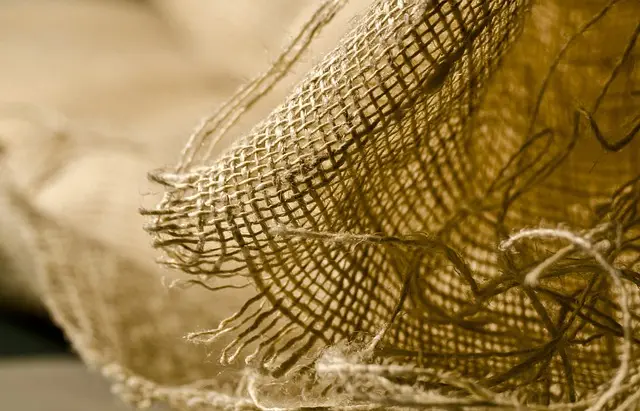Muscle soreness, particularly delayed onset muscle soreness (DOMS), results from micro-tears in muscle fibers and can be alleviated through various strategies. Kratom, a plant from Southeast Asia with potential pain-relieving properties due to its active alkaloids like mitragynine and 7-hydroxymitragynine, is increasingly recognized for its analgesic effects. To utilize kratom for muscle soreness, making kratom tea with powder is a popular method. This involves simmering the kratom leaves or powder in water to extract beneficial compounds. Users should begin with a moderate dose of one to two grams of kratom powder, ensuring they use adequately hot but not boiling water to preserve alkaloid integrity. The tea should be steeped for 10 to 15 minutes post-simmering, then strained for clarity and can be flavored with lemon juice or sweetened with honey for taste enhancement. It's important to consume the tea carefully, considering individual sensitivity and potential side effects. Additionally, kratom should be used responsibly, with an understanding of its legal status and how it may interact with other substances or health conditions. For those interested in natural pain relief, regular consumption of well-prepared kratom tea may offer sustained relief from muscle aches, serving as a viable alternative to conventional pain medications.
Muscle soreness can be a persistent impediment to maintaining an active lifestyle, often leaving individuals in pursuit of effective relief. Kratom, a tropical plant native to Southeast Asia, has garnered attention for its potential analgesic properties, making it a subject of interest for those seeking natural alternatives. This article delves into the mechanisms behind muscle soreness and examines kratom’s role as a potential remedy. Furthermore, it provides a detailed guide on how to make kratom tea with powder, offering a practical approach to incorporating this substance into your wellness routine. Lastly, we explore the benefits of kratom tea for muscle soreness relief, shedding light on its effectiveness and usage considerations.
- Understanding Muscle Soreness and Kratom's Role
- Step-by-Step Guide to Making Kratom Tea with Powder
- Exploring the Benefits of Kratom Tea for Muscle Soreness Relief
Understanding Muscle Soreness and Kratom's Role

Muscle soreness can be a debilitating experience, often resulting from intense physical activity or injury. The discomfort is typically a response to micro-tears in muscle fibers that occur during exercise, a phenomenon commonly known as delayed onset muscle soreness (DOMS). Understanding the origin of muscle soreness is crucial for finding effective relief methods. Enter kratom, a tropical evergreen tree native to Southeast Asia, whose leaves have been traditionally used for their pain-relieving properties. Kratom contains alkaloids such as mitragynine and 7-hydroxymitragynine, which are thought to interact with the body’s opioid receptors, potentially offering analgesic effects. For those seeking relief from muscle soreness, preparing kratom tea with powder can be a gentle yet effective method. This preparation involves simmering kratom leaves or dried powder in water for an extended period to extract the active compounds. The resulting tea should be consumed carefully, as the effects of kratom can vary depending on dosage and individual sensitivity. It’s important to adhere to recommended dosages and to consult with a healthcare provider before incorporating kratom into any wellness regimen, especially when aiming to alleviate muscle soreness. Additionally, pairing kratom consumption with adequate rest, proper nutrition, and hydration can enhance its efficacy in soothing aching muscles. As with any natural remedy, individual experiences with kratom may differ, and its use should be approached with caution due to its potential for side effects and interactions with other substances.
Step-by-Step Guide to Making Kratom Tea with Powder

When preparing kratom tea using powder, it’s crucial to approach the process methodically to ensure a potent and enjoyable beverage. The first step involves measuring out the appropriate amount of kratom powder; typically, one to two grams can suffice for beginners, though this may vary based on individual tolerance and desired effects. Begin by boiling water in a pot, ensuring you have enough to fully submerge the kratom powder without diluting its potency. Once the water reaches a rolling boil, remove it from the heat source and stir in the measured kratom powder until it’s thoroughly mixed and there are no lumps. Cover the pot with a lid to preserve heat and allow the mixture to steep for 10 to 15 minutes. This period allows the active compounds in the kratom to infuse into the water, enhancing the tea’s efficacy. After steeping, strain the tea through a fine-mesh sieve or cheesecloth into a clean cup or container to remove any residual powder and ensure a clear brew. For those seeking additional flavor without altering the tea’s effects, you can add lemon juice or honey after straining, as these ingredients are known to enhance kratom’s bioavailability. Always let the tea cool slightly before consuming, as drinking it immediately may cause burns. This step-by-step guide ensures that you make kratom tea with powder effectively for muscle soreness relief and to optimize the benefits of kratom. Remember to start with a small dose to gauge your body’s response and adjust accordingly.
Exploring the Benefits of Kratom Tea for Muscle Soreness Relief

Kratom, a tropical evergreen tree native to Southeast Asia, has been traditionally used for its medicinal properties. Among its myriad benefits, one significant aspect is its potential role in alleviating muscle soreness. When consumed as kratom tea, the active compounds, known as alkaloids, can interact with the body’s opioid receptors, which may help in managing pain associated with muscle strain or fatigue. Brewing kratom tea with powder is a straightforward process that can be tailored to individual preferences for strength and taste. To make kratom tea, one should start by properly measuring the desired amount of kratom powder—typically between 2 to 5 grams, depending on tolerance and intended effects. The powder is then mixed with hot water, not boiling, to prevent the degradation of alkaloids. This mixture is allowed to steep for an optimal time frame, usually around 10 to 15 minutes, which allows the alkaloids to infuse into the water fully. After steeping, the tea can be strained and sweetened or flavored according to personal preference before consumption. Regular intake of kratom tea may offer lasting relief from muscle soreness, making it a popular choice among those looking for natural alternatives to over-the-counter pain medications. It’s important to note that while kratom can be beneficial for some individuals, its use should be approached with caution and an understanding of the local laws and regulations governing its consumption, as well as potential interactions with other substances or medical conditions.
Muscle soreness can be a significant discomfort, often encountered after intense physical activity. Kratom, an herbal supplement derived from the leaves of Mitragyna speciosa, has been explored for its potential muscle soreness relief properties. This article delved into the intricacies of understanding muscle soreness and kratom’s role in alleviating it, followed by a practical step-by-step guide on how to make kratom tea with powder, a preparation method that many find effective for their needs. The exploration of the benefits of kratom tea for muscle soreness relief provides insight into a natural alternative that warrants consideration in one’s wellness regimen. As always, it is advisable to consult healthcare professionals before incorporating kratom into your health practices due to its potent effects and potential legal restrictions in certain regions.






